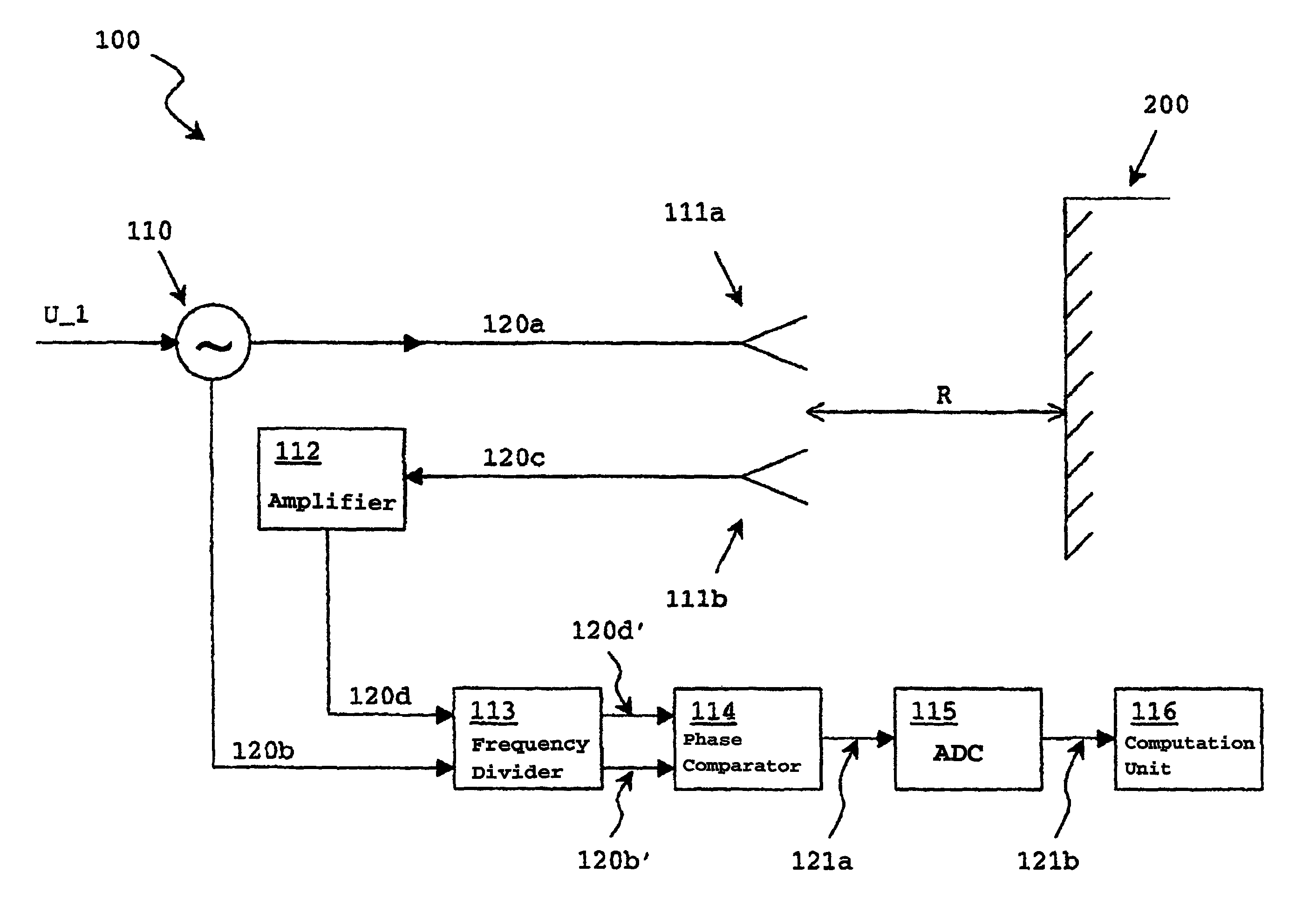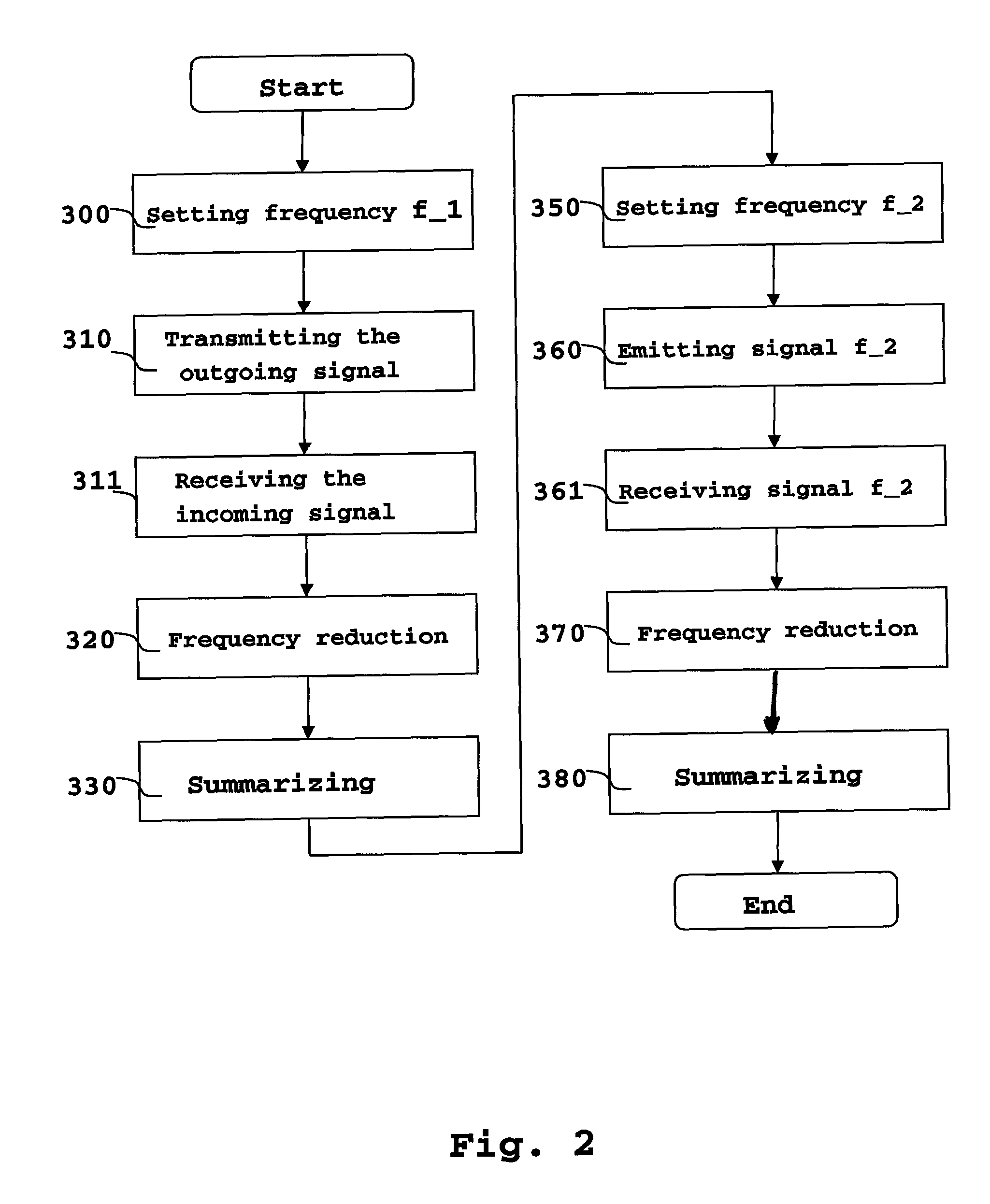Method and device for determining a distance to a target object
a target object and distance technology, applied in the field of distance determination to a target object, can solve the problems of low spatial resolution, unsuitability of such a distance determination, and inability to accurately determine the distance, so as to improve the range accuracy and increase the method's precision
- Summary
- Abstract
- Description
- Claims
- Application Information
AI Technical Summary
Benefits of technology
Problems solved by technology
Method used
Image
Examples
Embodiment Construction
[0022]FIG. 1 shows a device 100 according to the invention, which is provided for determining a distance R to a target object 200. Towards this end, the device 100 has a transmitter 111a for transmitting electromagnetic waves in the form of an outgoing signal 120a supplied to the transmitter. The transmitter 111a can for example be a horn or a patch antenna. To amplify the outgoing signal 120a, the transmitter 111a can also have a high-frequency amplifier not shown in FIG. 1 if appropriate, which is connected upstream of the horn or patch antenna used.
[0023]The transmitter 111a irradiates the outgoing signal 120a onto the target object 200 and at least a part of that outgoing signal is reflected from the target object 200 and received in a receiver 111b. The signal received in the receiver, likewise having e.g. a horn or patch antenna, is called the incoming signal 120c in the further description.
[0024]According to the invention, the incoming signal 120c is supplied to an amplifier ...
PUM
 Login to View More
Login to View More Abstract
Description
Claims
Application Information
 Login to View More
Login to View More - R&D
- Intellectual Property
- Life Sciences
- Materials
- Tech Scout
- Unparalleled Data Quality
- Higher Quality Content
- 60% Fewer Hallucinations
Browse by: Latest US Patents, China's latest patents, Technical Efficacy Thesaurus, Application Domain, Technology Topic, Popular Technical Reports.
© 2025 PatSnap. All rights reserved.Legal|Privacy policy|Modern Slavery Act Transparency Statement|Sitemap|About US| Contact US: help@patsnap.com



